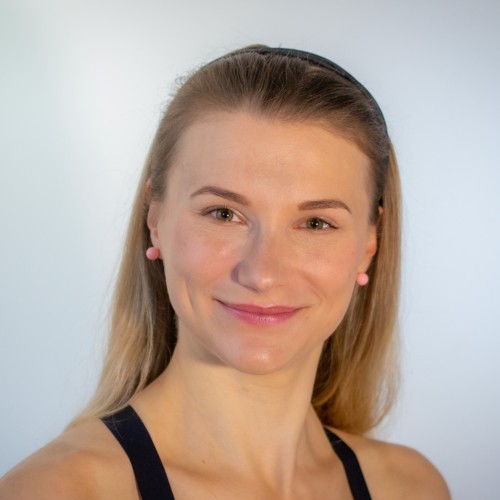Cordyceps (mace): properties, contraindications, how to take
Cordyceps (mace) is a type of parasitic fungus that has interesting properties for health.


Learn more about our editorial process
.

Learn more about our editorial process
.

Learn more about our editorial process
.

Learn more about our editorial process
.
Why you can trust us
Articles on Natu.Care are written based on scientific research, data from government websites and other reliable sources. The texts are written in cooperation with doctors, nutritionists and other health and beauty experts. Articles are reviewed before publication and during significant updates.
.Learn more about our editorial process
.Information about advertisements
Content on Natu.Care may contain links to products from the sale of which we may receive a commission. When creating content, we adhere to high editorial standards and take care to be objective about the products discussed. The presence of affiliate links is not dictated by our partners, and we select the products we review ourselves completely independently.
.Learn more about our terms and Conditions
.A parasitic fungus that invades an insect's body, attacks its nervous system, controls its prey's behaviour and feeds on it. In the final stage, cordyceps grows on the outer surface of the possessed insect. The victim dies and the fungus escapes from its body to spread its spores to other insects. Fungus.
Yes, this is the same fungus that in the game and TV series The Last of Us is responsible for the global zombie-apocalypse.
And you want to eat it... consciously. For your health. And it will be OK - it won't grow on your back, but rather offer positive properties.
The Last of Us.
From this article you will learn:
- What cordyceps is and what properties it has.
- How to take cordyceps.
- How to take cordyceps and when to expect the effects.
- What are the contraindications to use and side effects.
- How to take cordyceps and when to expect effects.
- Whether cordyceps is worth trying.

Sprawdź, za co pokochały go tysiące klientek Wegańskie żelki na sen, Ashwagandha KSM-66, ananas. -15% z kodem BLOG15
Wegańskie żelki na sen, Ashwagandha KSM-66, ananas
Wreszcie się wyśpisz! Wegańskie żelki na sen z najwyższej jakości ashwagandhą KSM-66®, ekstraktami ziołowymi i tryptofanem utulą Cię do snu.
Zobacz cenę
Bez problemu wstaje rano z budzikiem, co wcześniej się nie zdarzało, mam więcej energiiEwa Szczapinska
But let's start from the beginning.
.
Does cordyceps exist?
.
Yes, cordyceps does exist, but it does not act as extremely as the series The Last of Us suggests. There are more than 680 species of this parasitic fungus. Most are native to Asia, mainly in the high mountain areas of Nepal and Tibet. The most common and best studied species are cordyceps militaris and cordyceps sinensis. These fungi attack living organisms, but insects, not humans (uff).
What is cordyceps?
.
Cordyceps (also known as Chinese cordyceps, Chinese tentacle) is a species of parasitic fungiand. The name cordyceps is derived from the ancient Greek word κορδύλη kordýlē, meaning 'mace', and the Latin suffix -ceps, meaning 'with a head'.
The name refers to the shape of the fungus that grows from the body of the prey.
Cordyceps specialises in parasitising specific species of insect larvae. Each parasite that exists in nature attacks a specific host to which it is evolutionarily adapted.
Interesting fact
.The remains of cordycep victims - insects and fungi - have been collected, dried and used in traditional Chinese medicine to treat fatigue, kidney disease and low sex driveand.
Thanks to the work of scientists, we now know that bioactive componentsand:
are responsible for the effects of this mushroom.
- cordycepin, .
- polysaccharides, .
- ergosterol, .
- mannitol, .
- adenosine, .
There are many important nutrients in this deadly (to insects) fungus, including various types of essential amino acids, B vitamins (B1 (thiamine), B2 (riboflavin), B12), vitamin K, various functionally important carbohydrates, proteins, sterols, nucleosides and other trace elements.
Interesting and ... frightening discoveries by scientists
Scientists have discovered that ants infected with cordyceps behave like zombiesand. They suffer from convulsions and their movement consists of random, undirected movements. On top of this, their jaw muscles atrophy. This is a complex example of the behavioural manipulation requiring coordinated changes in host behaviour and morphology that cordyceps is capable of.
What does cordyceps help with?
.
Cordyceps helps to reduce fatigue, support immunity, reduce cholesterol, improve concentration, can combat inflammation in the body, improve sports performance and have an anti-aging effect. This is what scientific studies to date mainly involving animals or in vitroand suggest.
Note that there are not many reliable studies involving humans, so we cannot say that this mushroom has health-promoting properties for the human body. It's a guess - although, as you'll see shortly, it's promising a guess.
Is cordyceps safe?
.
Yes, cordyceps is considered safe for humans and is usually well tolerated. However, it can lead to adverse reactions in some people - but this will not be growing a stem out of the back. It is not known whether cordyceps is safe for women who are pregnant or breastfeeding, so it is not recommended for use during this period.
What you get in a good quality dietary supplement is only the extract from the fruiting body, not the ground mushroom. This makes it easy to assimilate the active substances and benefit from the beneficial properties themselves..
 .
.
Alexandra Cudna Clinical nutritionist
.
Cordyceps - what properties does it have?
.
The following properties of cordyceps refer mainly to results of animal or in vitro studies (i.e. studies under laboratory conditions outside the living organism, for example in a test tube)and.
Cordyceps potentially:
.
Reduces inflammation
.
Several laboratory studies have shown that when human cells are exposed to cordyceps militaris, proteins that increase inflammation in the body are suppressed, reversing that inflammation .
In a 2008 study involving asthmatic mice, cordyceps reduced inflammation in their airways. However, researchers stress that this mushroom is less effective than commonly prescribed substances used to alleviate inflammation in the body .
And how about... smearing yourself with a mushroom?
.
Cordyceps can have topical applications. One scientific study showed that this fungus applied topically in mice reduces skin inflammationand.
The potential anti-inflammatory properties of cordycepse have not yet been confirmed in humans.
Further studies are needed to confirm efficacy and determine the optimal dose and duration of use. If you are currently treating inflammation in the body - do not abandon conventional treatment..
 .
.
Witold Tomaszewskidoctor of medical sciences
.Improves sports performance
.
Cordyceps increases the production of the adenosine triphosphate (ATP) molecule, which is essential for providing energy to musclesand. This can improve the efficiency with which the body uses oxygen, especially during physical activityand.
There are two interesting studies (from a decade ago) involving seniors that show the positive effects of cordycepse on their physical activity.
In one of them, researchers tested the effects of cordycepse on exercise capacity in 30 healthy older people using a stationary bicycle. Participants were given either a synthetic strain of cordycep three times a day or a placebo for six weeks.
The participants received either a synthetic strain of cordycep three times a day or a placebo.
At the end of the study, the aerobic ceiling increased by 7% in participants who took cordyceps. The seniors taking placebo showed no change in this parameterand.
Oxygen threshold (VO2 max) is a measurement used to determine fitness levels. It is the maximum amount of oxygen that the human body can assimilate and utilise during intense exercise.

Anna Osica personal trainer
.
In a similar study, 20 healthy seniors were given 1 gram of cordycep or placebo for 12 weeksand. The subjects' exercise performance improved and contributed to feelings of well-beingand.
.
Current research, however, suggests that cordyceps is not effective in improving exercise performance in trained athletes. If you want to support performance during training, check out ashwagadha or other adaptogens.
Anti-aging effects
.
Many animals have benefited in scientific studies from the anti-aging properties of cordycep.
.
This mushroom increased antioxidant levels in ageing mice, improved memory and learning ability - the rodents performed better in maze testsand.
Cordyceps militaris also prolonged the lives of mice and fruit flies, compared to test animals that took a placebo .
Scientists explain that it is the antioxidant content of cordyceps that may explain their anti-ageing potential.
Antioxidants (antioxidants) are chemical compounds that protect the body's cells from the damaging effects of free radicals. Free radicals are perishable molecules that, in excess, promote disease and accelerate the ageing process..
 .
.
Alexandra Cudna Clinical nutritionist
It is not known whether cordyceps has the same anti-aging properties in humansand.
Reduces fatigue and stress
.
Cordyceps is used in Chinese medicine as a functional food for its stress and fatigue relieving effects .
Some manufacturers of cordyceps preparations boldly write about mood enhancement and antidepressant potential. However, be careful with this.
Partially positive results have been observed in mice and rats suffering from depression, according to scientific studies. However, these results have not been confirmed on the human population, so we have no argument for the use of this form of therapy for depression..
 .
.
Marcin Zarzycki physician
.
Improves memory and concentration
.
Cordyceps can support learning ability and improve memory. It has the potential to alleviate short-term memory impairment caused by brain ischaemiaand. The mushroom also contains nucleosides, cordyceps acid and other bioactive substances that may have potential benefits for cognitive function.
Cordyceps is a popular addition to so-called functional coffees, which are designed to stimulate and improve memory and focus, but do not contain caffeine.
See also:
Antitumour effects
.
Laboratory and animal studies have discovered the anti-cancer potential of cordyceps sinensis and militaris.
In a 2015 in vitro study, cordyceps inhibited the growth of many types of cancer cells, including lung, colon, skin and liver cancerand. Meanwhile, in mouse studies, it stopped the growth of lymphoma, melanoma and lung cancerand.
Cordyceps can reverse the side effects of cancer therapy. One study tested the effects of cordyceps sinensis on mice with leukopenia after radiotherapy and treatment with Taxol (a chemotherapy drug). Cordyceps reversed the leukopenia.
Leukopenia is a condition in which the number of white blood cells (leukocytes) decreases, lowering the body's defences and increasing the risk of infection..
 .
.
Witold Tomaszewskidoctor of medical sciences
..
However, it is important to note that these studies were conducted on animals and in vitro, so the effect of cordycepse on tumour suppression or leukopenia in humans is as yet unknown.
Prevention of type II diabetes
.
Results from studies in diabetic mice have shown that cordyceps can maintain normal blood sugar levels by mimicking the action of insulinand.
Cordyceps may play a key role in the treatment of diabetic nephropathy by affecting various mechanisms involved in inflammation, cell death, oxidative stress and insulin resistance .
Positive effects on the kidneys
.
The aforementioned diabetes can cause kidney diseaseand. A 2014 review of 22 studies involving 1,746 people with chronic kidney disease found that patients taking cordyceps preparations experienced improvements in kidney function .
It should be noted, however, that the results are not conclusive - the review authors stated that many of the studies were of low quality.
Regulates cholesterol
.
In a 2011 study, rats and hamsters were fed a high-fat diet. They were simultaneously given cordycepin (the active compound of cordycepin) for 4 weeks. The rodents had reduced levels of total cholesterol, triglycerides and so-called LDL bad cholesteroland.
In another study in which Syrian hamsters were fattened, their lipid profile was also significantly improved .
.
The modern diet promotes high cholesterol. This can lead to the development of cardiovascular disease..
 .
.
Alexandra Cudna Clinical nutritionist
.
Heart support
.
Rats with chronic kidney disease came under the magnifying glass of researchers in 2014. They were given cordyceps (of the genus sinensis) for eight weeks. The study showed that it significantly reduced heart and liver damage in the rodentsand.
Scientists attributed these findings to the adenosine content of cordyceps. Adenosine is a naturally occurring compound that protects the heart .
Some scientific studies have shown that cordyceps can increase blood flow in the heart and brain, improve microcirculation and stabilise blood pressure..
 .
.
Alexandra Cudna Clinical nutritionist
.
Facilitates weight loss
.
In one 2010 study, rats were fed a high-fat diet and given cordycepin at the same time. The results showed that consumption of this mushroom may promote weight loss, due to cordycepin's modification of the gut microflora, which may be one mechanism for obesity reductionand.
See also:
.
Improves libido
.
Many adaptogens are attributed with properties that improve sexual function and are called natural aphrodisiacs.
In Chinese medicine, cordyceps has been used to improve libido, fertility and semen quality. Scientific studies have shown that cordyceps (of the genus militaris) has a positive effect on testosterone production and improves sexual health in ratsand.
.
Castrated rats given cordyceps improved sexual function - the appearance of erections, prolonged erection time and ejaculationand.
.
Does cordyceps stimulate?
.
No, cordyceps does not stimulate because it is not a stimulant and has no such properties. Some scientific studies indicate that cordyceps, which is one of the adaptogens, can reduce fatigue, which can translate into feeling more energy to perform.
Cordyceps - doctors' opinions
.
Cordyceps has positive feedback from doctors specialising in Eastern medicine and mycotherapy experts due to its fatigue reduction, immune support, anti-aging and tonic effects and general strengthening of the body, among other things. Its use has been practised for over 4,000 years.
.
In Poland, where we have a different treatment tradition, doctors are cautious and temper enthusiasm. "At the moment, its consumption is a kind of medical experiment," says Dr Witold Tomaszewski, M.D., emphasising the scarcity of scientific studies confirming the properties of cordycep.
The use of cordycep is not a medical experiment.
Dosage
.
In research studies, scientists used 1000-3000 mg of cordycep per dayand in subjects. This amount did not cause side effects. It is best to follow the manufacturer's recommendations on the packaging. Due to limited human studies, there is no clear consensus on the dosage of cordycep.
How long to use cordyceps?
.
In various scientific studies cordyceps has been administered to humans or animals from 14 days to 3 weeks and this has not been associated with the occurrence of side effects. The effect of long-term cordyceps ingestion on humansand is unknown.
However, if you are not experiencing effects after a few weeks, perhaps try other adaptogenic plants?
See also:
What time to take cordyceps?
.
It doesn't matter what time of day you take cordyceps because it doesn't have an immediate effect. Taken in the morning or before a workout, it will not stimulate (it is not a stimulant), and consumed before bedtime, it will not have a sleep-inducing effect (it has no sleeping properties). Adjust the consumption of cordycep according to your preferences.
Some phytotherapy (herbal medicine) experts indicate that it is a good idea to consume cordyceps on an empty stomach, so that the natural digestive enzymes can more easily process and absorb it into the body.
When will I see the effects of cordyceps?
.
You may feel the effects of cordycep even after 7 days of regular consumption, but this depends on the purpose of use. For example, cholesterol lowering will not happen in a few days (and it won't happen at all if you don't change your diet), so blood tests should be done after 4-6 weeks of use.
But if you have a session or kitchen at work ahead of you, within a few days you may feel the knowledge self enter your head or tick off more tasks and not feel the need to drink coffee.
Which cordyceps to choose?
.
When looking for a product containing cordyceps extract, it is advisable to choose those that are standardised for polysaccharide content (10-40%) and standardised for cordic acid (the more the better, usually 7%). Ideally, if the manufacturer also provides the DER (Drug Extract Ratio).
Cordyceps from dietary supplements is not the same as the cordyceps from Tibetan monks extracted from areas of its natural occurrence. In the preparations available on the market you will find its synthetic form, extracted in laboratories.
Cordyceps from dietary supplements is not the same as that from the Tibetan monks.
It is worth looking at preparations that are a mixture of mushrooms and other adaptogenic plants. Some combinations may work better than a single substance. Look out for a blend of: cordyceps, reishi, coneflower (Lion's Mane), ashwagandha and rhodiola rosea.
Worth considering.
It is nice if the formulation includes piperine. It enhances the absorption of cordycepse and, in itself, adds valuable health properties to the preparation.
Contraindications
.
Cordycep contraindications include pregnancy, lactation, age under 18 years, autoimmune diseases, use of immunosuppressants and anticoagulants, allergy to the ingredient and planned surgery. Consult your doctor to be 100% sure of the safety of use.
Consult your doctor about what medicines and dietary supplements you are taking before any planned surgery. Some of these, such as cordyceps, should be discontinued 2 weeks before surgery as there are indications that it may affect the risk of bleeding during surgery.
.
 .
.
Witold Tomaszewskidoctor of medical sciences
..
Side effects
.
Cordyceps can cause side effects such as diarrhoea, constipation and stomach discomfort in someand. They usually pass after discontinuing the product. Cordyceps can affect the increased leaching of calcium from the body , so take care of its supply in the diet.
Cordyceps - expert opinions
.
Preliminary studies show considerable potential for cordyceps, but the study groups were not numerous and there is no information about a designed or ongoing clinical trial starring 'our hero'. It is not impossible that products containing cordyceps could become valuable medicines. For the moment, its consumption is a kind of medical experiment..
 .
.
Witold Tomaszewskidoctor of medical sciences
.Cordyceps is considered pharmacologically safe for human consumption. It shows potential to support the body, but we still have to wait for fireworks. If you want to try it - follow the manufacturer's recommendations and give it a few weeks of time to develop..
 .
.
Ilona Krzak Master of Pharmacy
Cordyceps mushrooms have strong medicinal potential, but at this point we only know a small percentage of their properties and actual effects. It's worth trying, keep an open mind, but don't exceed the recommended daily portions and don't set yourself up for some big WOW.
 .
.
Julia SkrajdaDietitian
.There is a lack of evidence on the full safety of cordycep in humans. A single study has shown that it may be useful in enhancing physical performance in athletes. This is still too little to determine dosage, safety and optimal duration of use. And while numerous properties of cordycep have been confirmed by animal studies, we are still waiting for the results of human studies..
 .
.
Alexandra Cudna Clinical nutritionist
.
Why the growing popularity of mushrooms?
.
Dietitian explains:
.
In this day and age, we have to deal with many types of stressors. Mental tension, insufficient sleep, inflammation, environmental pollution, overstimulation or poor diet. We are looking for natural ways to regain balance..
 .
.
Alexandra Cudna Clinical nutritionist
"Mushrooms are excellent at supporting the body on its journey towards balance, a fact that has already been recognised in ancient Chinese medicine. Nowadays, the scientific world is starting to appreciate more and more the properties of adaptogenic plants and mushrooms. This allows us to improve our quality of life and increase our resistance to stress without resorting to pharmacology," adds the nutritionist.
See also:
Summary
.
In summary
- Cordyceps is a parasitic fungus that attacks selected insect species.
- Cordyceps is a parasitic fungus that attacks selected insect species.
- There are more than 680 species of cordyceps and they grow mainly in the high altitude areas of Nepal and Tibet.
- Cordyceps is a fungus that attacks insects.
- The most popular and best studied are cordyceps sinensis and cordyceps militaris. .
- The beneficial properties of cordyceps have been studied mainly in in vitro and animal tests. .
- Cordyceps has shown in studies the potential to support kidney function, heart function, sugar and insulin metabolism, and may support memory, concentration, libido and athletic performance.
- There are no high-quality studies that support the health-promoting benefits of cordyceps for humans. .
- Do not use cordycep if you are pregnant or lactating, under 18 years of age, scheduled for surgery, undergoing chronic treatment for autoimmune disease, or on immunosuppressive and anticoagulant medications.
FAQ
.Do you need to take breaks from cordycep?
Some sources state that you need to take breaks of about a week from consuming cordycep after 6-8 weeks of use. This is because cordyceps mushrooms activate immune cells. It is important to give the body time to rest and rebalance after a cycle of their use.
Does cordyceps lower blood pressure?
.Some scientific studies show that cordyceps can increase blood flow in the heart and brain, improve microcirculation and stabilise blood pressure. It should be noted that research on cordyceps is mainly in vitro or animal laboratory tests. Cordyceps cannot be used as a treatment for hypertension.
Where does cordyceps grow?
.Cordyceps grows mainly in the Tibetan Highlands in the highest mountain areas of Nepal and Tibet. It is a relatively rare mushroom and is difficult to collect. This makes it expensive - its price is as high as £20,000 per kilogram.
What does cordyceps work for?
.According to in vitro and animal studies, cordyceps has a positive effect on reducing inflammation, lowering cholesterol, reducing stress and tension, and has antioxidant potential.
Can passionflower infect humans?
.No, the tentacle cannot infect humans - it does not attack humans, only selected insect species e.g. ants, spiders, moths and locusts. It will not affect humans the way it affects insects.
Can cordyceps be cultured?
.Yes, it is possible to grow cordyceps, but it is difficult and expensive. Cordyceps needs special conditions to thrive. The cordyceps mycelium grows vigorously in the dark at 12-23°C. It usually takes about 21 days for most strains to develop eggs.
Sources
.See all
.Ahn, Y. J., Park, S. J., Lee, S. G., Shin, S. C., & Choi, D. H. (2000). Cordycepin: Selective growth inhibitor derived from liquid culture of Cordyceps militaris against Clostridium spp. Journal of Agricultural and Food Chemistry, 48(7), 2744-2748. https://doi.org/10.1021/jf990862n
An, Y., Li, Y., Wang, X., Chen, Z., Xu, H., Wu, L., Li, S., Wang, C., Luan, W., Wang, X., Liu, M., Tang, X., & Yu, L. (2018). Cordycepin reduces weight through regulating gut microbiota in high-fat diet-induced obese rats. Lipids in Health and Disease, 17(1), 276. https://doi.org/10.1186/s12944-018-0910-6
Chen, B., Sun, Y., Luo, F., & Wang, C. (2020). Bioactive Metabolites and Potential Mycotoxins Produced by Cordyceps Fungi: A Review of Safety. Toxins, 12(6), Article 6. https://doi.org/10.3390/toxins12060410
Chen, S., Li, Z., Krochmal, R., Abrazado, M., Kim, W., & Cooper, C. B. (2010a). Effect of Cs-4® (Cordyceps sinensis) on Exercise Performance in Healthy Older Subjects: A Double-Blind, Placebo-Controlled Trial. Journal of Alternative and Complementary Medicine, 16(5), 585-590. https://doi.org/10.1089/acm.2009.0226
Chen, S., Li, Z., Krochmal, R., Abrazado, M., Kim, W., & Cooper, C. B. (2010b). Effect of Cs-4® (Cordyceps sinensis) on Exercise Performance in Healthy Older Subjects: A Double-Blind, Placebo-Controlled Trial. Journal of Alternative and Complementary Medicine, 16(5), 585-590. https://doi.org/10.1089/acm.2009.0226
Cunningham, K. G., Manson, W., Spring, F. S., & Hutchinson, S. A. (1950). Cordycepin, a metabolic product isolated from cultures of Cordyceps militaris (Linn.) Link. Nature, 166(4231), 949. https://doi.org/10.1038/166949a0
Das, G., Shin, H.-S., Leyva-Gómez, G., Prado-Audelo, M. L. D., Cortes, H., Singh, Y. D., Panda, M. K., Mishra, A. P., Nigam, M., Saklani, S., Chaturi, P. K., Martorell, M., Cruz-Martins, N., Sharma, V., Garg, N., Sharma, R., & Patra, J. K. (2020). Cordyceps spp.: A Review on Its Immune-Stimulatory and Other Biological Potentials. Frontiers in Pharmacology, 11, 602364. https://doi.org/10.3389/fphar.2020.602364
Das, S. K., Masuda, M., Sakurai, A., & Sakakibara, M. (2010). Medicinal uses of the mushroom Cordyceps militaris: Current state and prospects. Phytotherapy, 81(8), 961-968. https://doi.org/10.1016/j.fitote.2010.07.010
Dietary supplements and bleeding-PMC. (n.d.). Retrieved 25 May 2023, from https://www.ncbi.nlm.nih.gov/pmc/articles/PMC9586694/
Dunn, J., & Grider, M. H. (2023). Physiology, Adenosine Triphosphate. In StatPearls. StatPearls Publishing. http://www.ncbi.nlm.nih.gov/books/NBK553175/
.Elkhateeb, W., & Daba, G. (2020a). Review: The endless nutritional and pharmaceutical benefits of the Himalayan gold, Cordyceps; Current knowledge and prospective potentials. Asian Journal of Natural Product Biochemistry, 18(2), Article 2. https://doi.org/10.13057/biofar/f180204
Elkhateeb, W., & Daba, G. (2020b). Review: The endless nutritional and pharmaceutical benefits of the Himalayan gold, Cordyceps; Current knowledge and prospective potentials. Asian Journal of Natural Product Biochemistry, 18(2), Article 2. https://doi.org/10.13057/biofar/f180204
Gao, J., Lian, Z.-Q., Zhu, P., & Zhu, H.-B. (2011). Lipid-lowering effect of cordycepin (3'-deoxyadenosine) from Cordyceps militaris on hyperlipidemic hamsters and rats. Yao Xue Xue Bao = Acta Pharmaceutica Sinica, 46(6), 669-676.
Guo, F.-Q., Li, A., Huang, L.-F., Liang, Y.-Z., & Chen, B.-M. (2006). Identification and determination of nucleosides in Cordyceps sinensis and its substitutes by high performance liquid chromatography with mass spectrometric detection. Journal of Pharmaceutical and Biomedical Analysis, 40(3), 623-630. https://doi.org/10.1016/j.jpba.2005.07.034
Hawkins, M. N., Raven, P. B., Snell, P. G., Stray-Gundersen, J., & Levine, B. D. (2007). Maximal oxygen uptake as a parametric measure of cardiorespiratory capacity. Medicine and Science in Sports and Exercise, 39(1), 103-107. https://doi.org/10.1249/01.mss.0000241641.75101.64
Hsu, C.-H., Sun, H.-L., Sheu, J.-N., Ku, M.-S., Hu, C.-M., Chan, Y., & Lue, K.-H. (2008). Effects of the immunomodulatory agent Cordyceps militaris on airway inflammation in a mouse asthma model. Pediatrics and Neonatology, 49(5), 171-178. https://doi.org/10.1016/S1875-9572(09)60004-8
Ji, D.-B., Ye, J., Li, C.-L., Wang, Y.-H., Zhao, J., & Cai, S.-Q. (2009). Antiaging effect of Cordyceps sinensis extract. Phytotherapy Research: PTR, 23(1), 116-122. https://doi.org/10.1002/ptr.2576
Kim, K.-M., Kwon, Y.-G., Chung, H.-T., Yun, Y.-G., Pae, H.-O., Han, J. A., Ha, K. S., Kim, T.-W., & Kim, Y.-M. (2003). Methanol extract of Cordyceps pruinosa inhibits in vitro and in vivo inflammatory mediators by suppressing NF-kappaB activation. Toxicology and Applied Pharmacology, 190(1), 1-8. https://doi.org/10.1016/s0041-008x(03)00152-2
.Kim, Y. O., Kim, H. J., Abu-Taweel, G. M., Oh, J., & Sung, G.-H. (2019). Neuroprotective and therapeutic effect of Cordyceps militaris on ischemia-induced neuronal death and cognitive impairments. Saudi Journal of Biological Sciences, 26(7), 1352-1357. https://doi.org/10.1016/j.sjbs.2018.08.011
Kuo, Y. C., Tsai, W. J., Shiao, M. S., Chen, C. F., & Lin, C. Y. (1996). Cordyceps sinensis as an immunomodulatory agent. The American Journal of Chinese Medicine, 24(2), 111-125. https://doi.org/10.1142/S0192415X96000165
Lam, K. Y. C., Chan, G. K. L., Xin, G.-Z., Xu, H., Ku, C.-F., Chen, J.-P., Yao, P., Lin, H.-Q., Dong, T. T. X., & Tsim, K. W. K. (2015). Authentication of Cordyceps sinensis by DNA Analyses: Comparison of ITS Sequence Analysis and RAPD-Derived Molecular Markers. Molecules, 20(12), Article 12. https://doi.org/10.3390/molecules201219861
Li, X.-T., Li, H.-C., Li, C.-B., Dou, D.-Q., & Gao, M.-B. (2010). Protective effects on mitochondria and anti-aging activity of polysaccharides from cultivated fruiting bodies of Cordyceps militaris. The American Journal of Chinese Medicine, 38(6), 1093-1106. https://doi.org/10.1142/S0192415X10008494
Li, Y., Cheng, W., Da, Z., Hu, F., & Li, C. (2017). Analysis of radical scavenging active components in the fermented mycelia of Ophiocordyceps formosana. Mycology, 8(4), 276–285. https://doi.org/10.1080/21501203.2017.1383318
Lin, B., & Li, S. (2011). Cordyceps as an Herbal Drug. IN I. F. F. Benzie & S. Wachtel-Galor (Eds.), Herbal Medicine: Biomolecular and Clinical Aspects (2nd ed.). CRC Press/Taylor & Francis. http://www.ncbi.nlm.nih.gov/books/NBK92758/
Ling, J.-Y., Sun, Y.-J., Zhang, H., Lv, P., & Zhang, C.-K. (2002). Measurement of cordycepin and adenosine in stroma of Cordyceps sp. By capillary zone electrophoresis (CZE). Journal of Bioscience and Bioengineering, 94(4), 371-374. https://doi.org/10.1263/jbb.94.371
Liu, X., Zhong, F., Tang, X., Lian, F., Zhou, Q., Guo, S., Liu, J., Sun, P., Hao, X., Lu, Y., Wang, W., Chen, N., & Zhang, N. (2014). Cordyceps sinensis protects against liver and heart injuries in a rat model of chronic kidney disease: A metabolomic analysis. Acta Pharmacologica Sinica, 35(5), 697-706. https://doi.org/10.1038/aps.2013.186
Liu, Y., Wang, J., Wang, W., Zhang, H., Zhang, X., & Han, C. (2015). The Chemical Constituents and Pharmacological Actions of Cordyceps sinensis. Evidence-based Complementary and Alternative Medicine : eCAM, 2015, 575063. https://doi.org/10.1155/2015/575063
Lu, Y., Zhi, Y., Miyakawa, T., & Tanokura, M. (2019). Metabolic profiling of natural and cultured Cordyceps by NMR spectroscopy. Scientific Reports, 9(1), Article 1. https://doi.org/10.1038/s41598-019-44154-x
Ng, T. B., & Wang, H. X. (2005). Pharmacological actions of Cordyceps, a prized folk medicine. The Journal of Pharmacy and Pharmacology, 57(12), 1509-1519. https://doi.org/10.1211/jpp.57.12.0001
Park, S.-Y., Jung, S.-J., Ha, K.-C., Sin, H.-S., Jang, S.-H., Chae, H.-J., & Chae, S.-W. (2015a). Anti-inflammatory effects of Cordyceps mycelium (Paecilomyces hepiali, CBG-CS-2) in Raw264.7 murine macrophages. Oriental Pharmacy and Experimental Medicine, 15(1), 7-12. https://doi.org/10.1007/s13596-014-0173-3
Park, S.-Y., Jung, S.-J., Ha, K.-C., Sin, H.-S., Jang, S.-H., Chae, H.-J., & Chae, S.-W. (2015b). Anti-inflammatory effects of Cordyceps mycelium (Paecilomyces hepiali, CBG-CS-2) in Raw264.7 murine macrophages. Oriental Pharmacy and Experimental Medicine, 15(1), 7. https://doi.org/10.1007/s13596-014-0173-3
Sun, T., Dong, W., Jiang, G., Yang, J., Liu, J., Zhao, L., & Ma, P. (2019). Cordyceps militaris Improves Chronic Kidney Disease by Affecting TLR4/NF-κB Redox Signaling Pathway. Oxidative Medicine and Cellular Longevity, 2019, 7850863. https://doi.org/10.1155/2019/7850863
Tran, M. H., Nguyen, T. M., & Huynh, V. B. (2023). Diversity evaluation of Cordyceps spp. in Bidoup Nui Ba, Lam Dong province, Vietnam. IOP Conference Series: Earth and Environmental Science, 1155(1), 012003. https://doi.org/10.1088/1755-1315/1155/1/012003
Tuli, H. S., Sandhu, S. S., & Sharma, A. K. (2014). Pharmacological and therapeutic potential of Cordyceps with special reference to Cordycepin. 3 Biotech, 4(1), 1-12. https://doi.org/10.1007/s13205-013-0121-9
Wang, L., Sun, H., Yang, M., Xu, Y., Hou, L., Yu, H., Wang, X., Zhang, Z., & Han, J. (2022). Bidirectional regulatory effects of Cordyceps on arrhythmia: Clinical evaluations and network pharmacology. Frontiers in Pharmacology, 13, 948173. https://doi.org/10.3389/fphar.2022.948173
Weng, S.-C., Chou, C.-J., Lin, L.-C., Tsai, W.-J., & Kuo, Y.-C. (2002). Immunomodulatory functions of extracts from the Chinese medicinal fungus Cordyceps cicadae. Journal of Ethnopharmacology, 83(1-2), 79-85. https://doi.org/10.1016/s0378-8741(02)00212-x
.Won, S.-Y., & Park, E.-H. (2005). Anti-inflammatory and related pharmacological activities of cultured mycelia and fruiting bodies of Cordyceps militaris. Journal of Ethnopharmacology, 96(3), 555-561. https://doi.org/10.1016/j.jep.2004.10.009
Xiao, J.-H., Xiao, D.-M., Chen, D.-X., Xiao, Y., Liang, Z.-Q., & Zhong, J.-J. (2012). Polysaccharides from the Medicinal Mushroom Cordyceps taii Show Antioxidant and Immunoenhancing Activities in a D-Galactose-Induced Aging Mouse Model. Evidence-Based Complementary and Alternative Medicine: ECAM, 2012, 273435. https://doi.org/10.1155/2012/273435
Yuan, G., An, L., Sun, Y., Xu, G., & Du, P. (2018). Improvement of Learning and Memory Induced by Cordyceps Polypeptide Treatment and the Underlying Mechanism. Evidence-based Complementary and Alternative Medicine : eCAM, 2018, 9419264. https://doi.org/10.1155/2018/9419264
Zhou, J., Chen, X., Xiao, L., Zhou, J., Feng, L., & Wang, G. (2021). Efficacy and Safety of Cordyceps militaris as an Adjuvant to Duloxetine in the Treatment of Insomnia in Patients With Depression: A 6-Week Double- Blind, Randomized, Placebo-Controlled Trial. Frontiers in Psychiatry, 12, 754921. https://doi.org/10.3389/fpsyt.2021.754921
.
Editorials
Meet the team



Ashwagandha affects thyroid hormone levels. Find out if you can use it.

See how mountain pintail can affect your wellbeing.

Check out the opinions of doctors and other professionals about ashwagandha. Also find out what people on the forum think about it.
